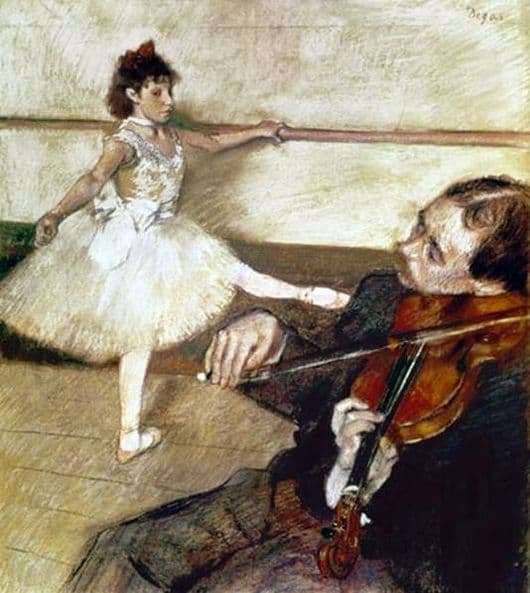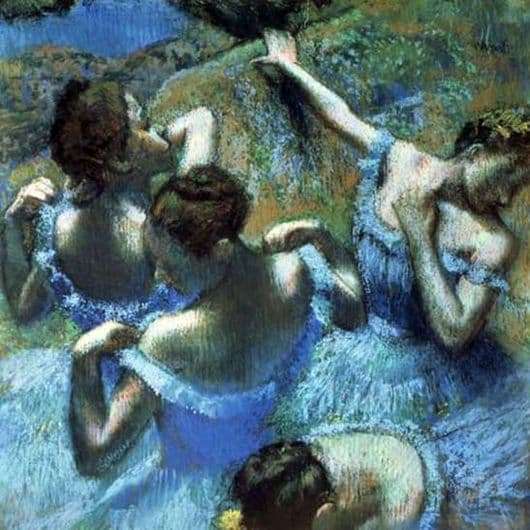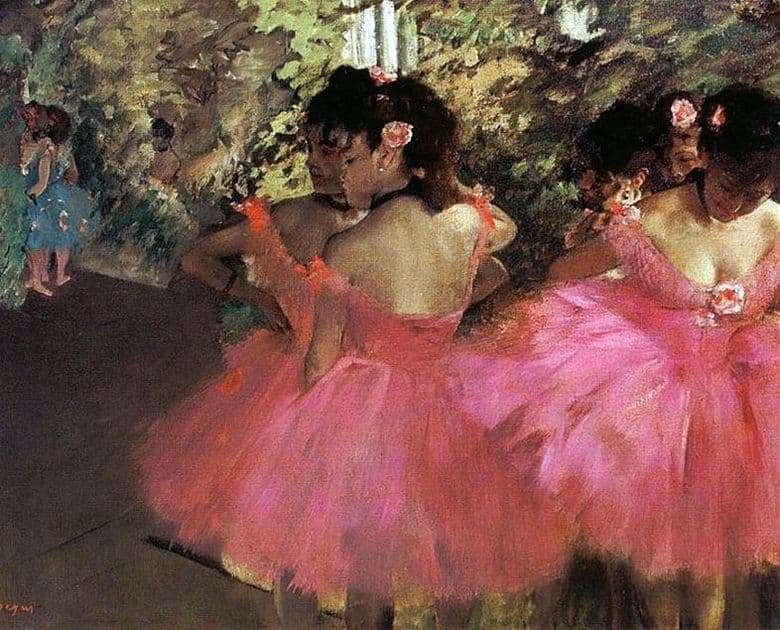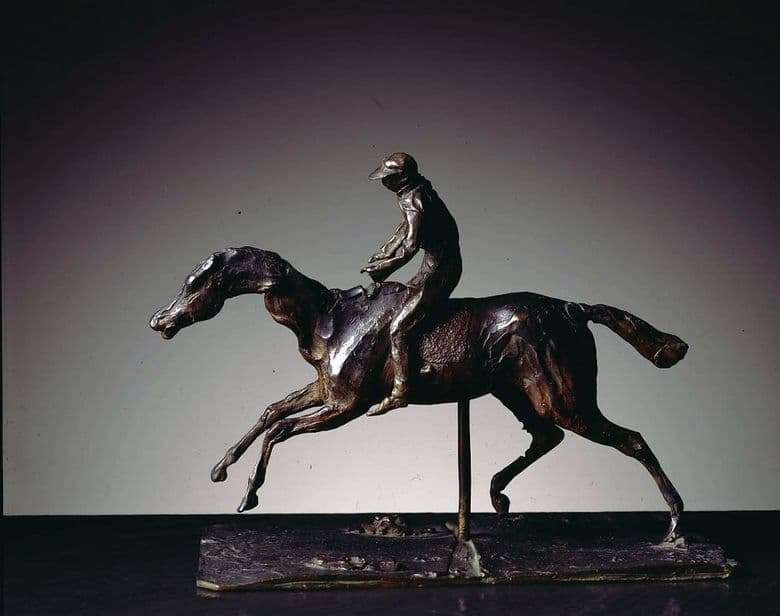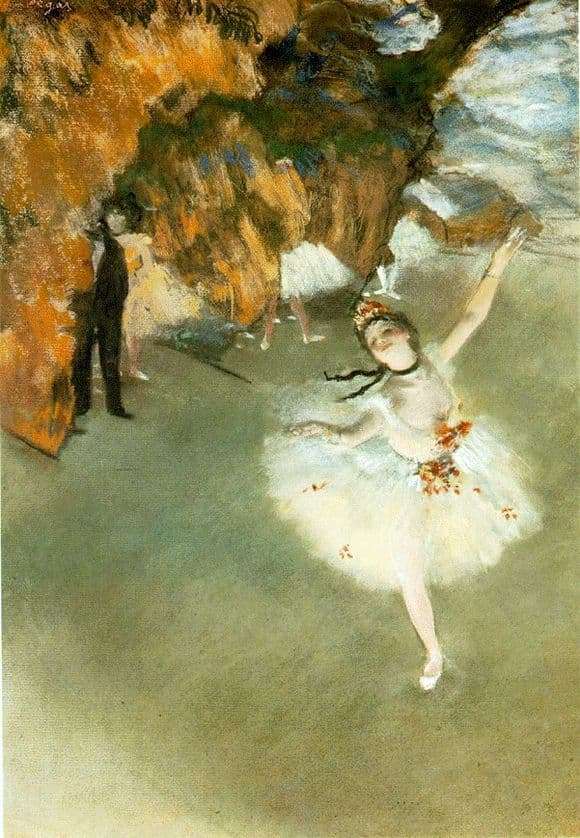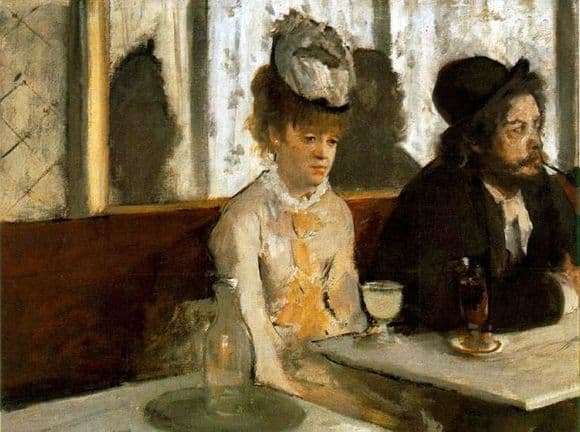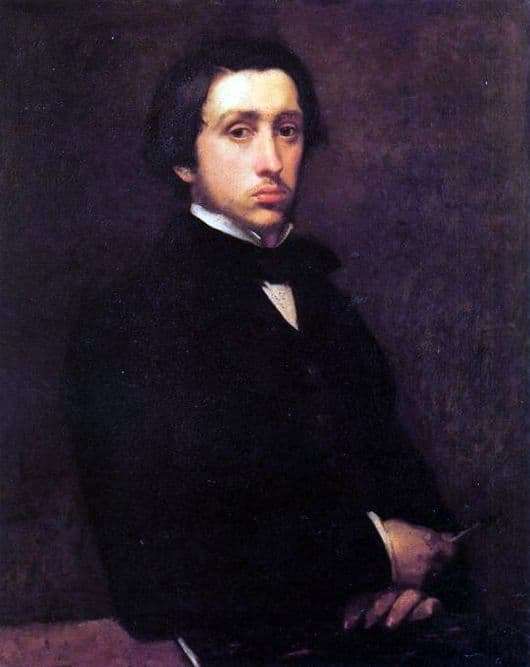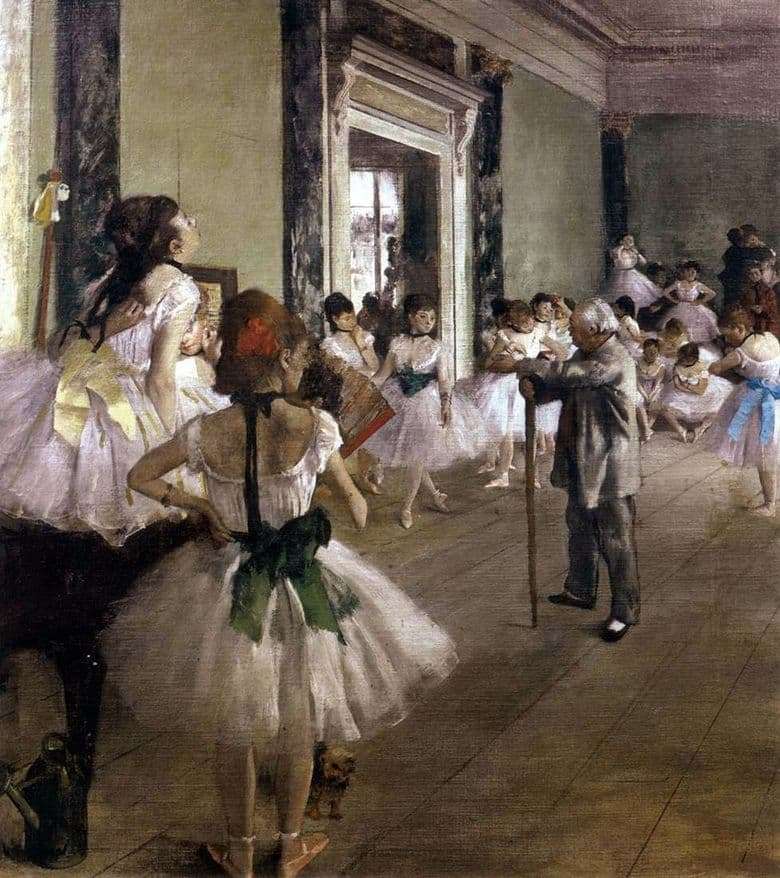
“Dance Class” – one of the most famous works of Edgar Degas. The artist wrote a lot of the artistic world, depicting actors, opera singers and dancers in his paintings. Backstage inspired the author; He often visited the Paris Opera, looking for scenes for future paintings. In the end, he became behind the scenes “his” man. The magic country, located “on the other side of the curtain,” for most viewers is a sphere completely unfamiliar; Degas showed the common man how the bohemian world lives – he showed it with love, but partly with sarcasm.
Ballerinas – the main and most common theme in the paintings of Degas. On the one hand, the artist is fascinated by the ballet and the images created on the stage; on the other hand, he treats the heroines of his works ironically. The painter saw the ballet from a completely new point of view.
The picture “Dance Class” author wrote more than one year. To this end, he attended the lessons of the legendary choreographer Perrot – the teacher occupies the center of the picture. Behind the master is years full of triumph and victories, a long life filled with trips to different countries and brilliant performances for the best dancers of modern times. Perrault is not young, he leans on a stick; but still energetic and full of ideas.
In the picture – the last minutes of the lesson. Young ballet fairies relieved tension, relaxed; only some of them are in a hurry to repeat the necessary steps. Other nymphs have already wilted, lowered their heads and burned their shoulders – tiredness lets know about itself. In the poses of girls there is nothing sublime or pathetic; the girl in the foreground gladly scratches her back, her friends in the depths of the room straighten their dresses, counting the minutes before that moment, when she can finally change her clothes. The contrast of light white packs, reminiscent of the magic of ballet, and ordinary facial expressions of the heroines is amazing.
The artist has prescribed in detail the boardwalk floor of the hall. Degas is one of those rare authors who attached equal importance both to the heroes of his works of art and large, significant details, and trifles – the floor, walls, the background.
Description of the painting by Edgar Degas “Dance Class”
